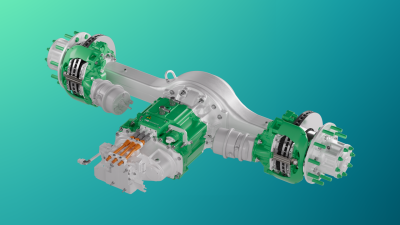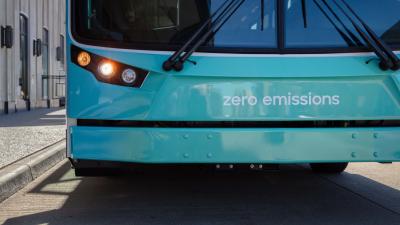Fuel Cells
What role do PEM fuel cells have in on-site power generation?
As industries continue their pursuit of sustainable energy solutions, there is a rising demand for hydrogen as an energy source, including using proton exchange membrane (PEM) fuel cells. One application that has its eye on PEM fuel cells is stationary, on-site power generation.
Gensets: traditional on-site power generation
The term “genset” refers to a generator set, a compact unit comprised of an engine and an electric generator. Its primary function is to generate electrical power efficiently. They are versatile power sources, and their primary application is on-site power generation. This includes backup, remote, and supplemental power supply.
Traditional gensets use an internal combustion engine powered by diesel, natural gas or other non-zero emissions fuel types. The engine works with the electric generator, converting mechanical energy into electrical energy. While they are highly efficient for on-site power generation, their reliance on fossil fuels is driving customers and policy makers to seek zero emission alternatives.
The rising demand for sustainable on-site power
Power generation is currently the world's largest source of carbon dioxide (CO2) emissions, so avoiding climate change's worst impacts will require a phase-out of reliance on fossil fuels.
At the same time, the International Energy Agency (IEA) projects the global electricity demand to grow faster over the next three years as the clean energy transition gathers speed.
One path toward decarbonized stationary power generation is PEM fuel cells (PEMFC) which, when using hydrogen as its energy source, produce electricity that is carbon-free at point-of-use. Because there is no combustion or harmful emissions, the environmental impacts associated with power generation are eliminated. This makes PEMFC a preferred alternative to traditional gensets.
Stationary applications for PEM fuel cells
Stationary power applications fall under two categories: behind-the-meter and front-of-the-meter.
Behind the meter
Behind-the-meter (BTM) applications refer to installing energy solutions on the customer's side of the electricity meter. PEMFC offers businesses and residences a dispatchable, zero-emissions alternative to diesel or natural gas genset power. PEMFC may also be used to reduce peak power price exposures and thus reduce dependence on the grid while also minimizing transmission and distribution losses.
Examples of behind-the-meter applications include:
- Commercial and industrial facilities: Businesses are increasingly adopting PEM fuel cells to power their operations. From manufacturing plants to data centers, fuel cells provide a stable and clean energy source, contributing to both cost savings and environmental stewardship. Industrial facilities which already utilize hydrogen in operations are an ideal application for stationary PEM fuel cells.
- Electric vehicle charging stations: The rise of electric vehicles demands a robust charging infrastructure. PEM fuel cells play a pivotal role in providing continuous and reliable power to EV charging stations, ensuring seamless operation and encouraging the adoption of clean transportation.
- Hydrogen refueling stations: As hydrogen gains traction as a clean fuel for various applications, including transportation, PEM fuel cells become indispensable for onsite hydrogen production. These fueling stations contribute to the expansion of the hydrogen economy and support emission-free mobility.
Front of the meter
Front-of-the-meter (FTM) applications involve large-scale deployment of PEM fuel cells directly within the utility infrastructure. This approach provides utilities with a zero-emission alternative to peaker plants utilizing fossil fuels.
Examples of front-of-the-meter applications include:
- Utility substations: Like industrial facilities, utilities and independent power producers can utilize fuel cells as zero emissions and dispatchable solution alternatives to diesel gensets in substations. As utilities continue investing in hydrogen production facilities, transitioning to PEMFC for onsite power generation will become increasingly viable.
- Peaker plants: Utilities may also reduce overall emissions from grid power by deploying fuel cells in lieu of natural gas or other fossil fuel peaker plants.
The Accelera advantage: infrastructure and technology readiness
When asking commercial, industrial, and utility buyers of onsite and peak power solutions to shift to more sustainable power, there are common adoption roadblocks they need to overcome. Two of them are infrastructure and technology readiness. Traditional gensets have been around for over a century, so their infrastructure is already fully in place to support power demand, and the technology is proven to generate reliable, efficient electricity.
Three major advantages of Accelera™ by Cummins PEM fuel cell technology are that they are:
- Informed by decades of fuel cell as well as genset packaging experience.
- Can be seamlessly integrated into existing traditional genset infrastructure.
- Well-suited for scaling up to larger power nodes to support growing customer needs.
To ensure technology readiness, Accelera works closely with the Cummins Inc. power generation business segment and other integration partners. Leveraging the shared expertise in traditional genset packaging, Accelera built a scalable framework where multiple fuel cell power modules can be configured into racks to form blocks. These racks come together – along with power conditioning, energy storage and other innovative control hardware and software – for seamless integration into existing genset infrastructure.
Because Accelera PEMFC stationary solutions allow for seamless integration, commercial, industrial, and utility companies can confidently shift to decarbonized power generation now. They don’t need to wait for new or additional infrastructure to be established before switching.
A global partner
With more companies taking action to offset their emissions globally, integrating PEM fuel cell technology into large-scale power generation is becoming more prevalent. Our extensive partnership network across hydrogen suppliers, integrators and EPCs worldwide ensures Accelera is positioned to facilitate streamlined transitions from the traditional to the sustainable.
Power generation is subject to varying regulations and standards worldwide. But with a comprehensive understanding of these diverse energy landscapes, regulations and challenges, Accelera has the expertise and the scale to offer customized and compliant solutions for a cleaner, greener future.

